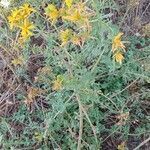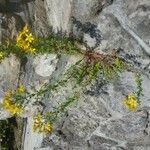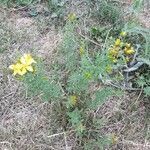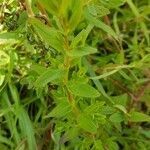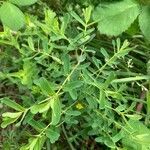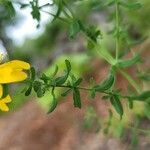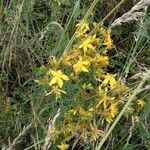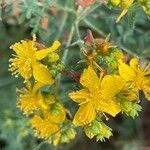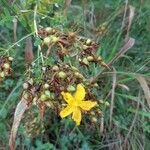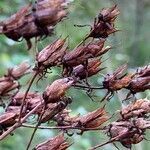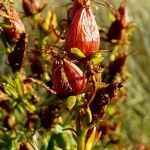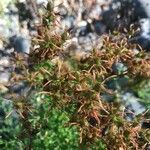| Therapeutic use
|
Anthelmintics (aerial part), Anti-bacterial agents (aerial part), Antimutagenic agents (aerial part), Antiviral agents (aerial part), Diuretics (aerial part), Liver diseases (aerial part), Menstruation-inducing agents (aerial part), Nootropic agents (aerial part), Stress, physiological (aerial part), Urination disorders (bark), Anti-bacterial agents (flower), Antirheumatic agents (flower), Edema (flower), Low back pain (flower), Skin care (flower), Ulcer (flower), Wound healing (flower), Wounds and injuries (flower), Antirheumatic agents (fruit), Edema (fruit), Low back pain (fruit), Ulcer (fruit), Wounds and injuries (fruit), Anti-infective agents (leaf), Contraceptive agents (leaf), Diarrhea (leaf), Hemorrhoids (leaf), Hypertension (leaf), Neurotic disorders (leaf), Rectal prolapse (leaf), Urination disorders (leaf), Uterine diseases (leaf), Wounds and injuries (leaf), Snake Bite Remedy (root), Strengthener (root), Reproductive Aid (root), Antirheumatic agents (root), Antioxidants (shoot), Lipid peroxidation (shoot), Abortifacient (unspecified), Antidiarrheal (unspecified), Dermatological Aid (unspecified), Febrifuge (unspecified), Gastrointestinal Aid (unspecified), Hemostat (unspecified), Venereal Aid (unspecified), Cough Medicine (unspecified), Alopecia (unspecified), Anodyne (unspecified), Antibiotic (unspecified), Antiseptic (unspecified), Astringent (unspecified), Bactericide (unspecified), Cancer(Stomach) (unspecified), Diuretic (unspecified), Emmenagogue (unspecified), Expectorant (unspecified), Gastrointestinal (unspecified), Lung (unspecified), Nervine (unspecified), Poison (unspecified), Resolvent (unspecified), Rheumatism (unspecified), Sore (unspecified), Stimulant (unspecified), Tumor (unspecified), Urogenital (unspecified), Uterotonic (unspecified), Vermicide (unspecified), Vermifuge (unspecified), Vulnerary (unspecified), Wound (unspecified), Depression (unspecified), Phototoxic (unspecified), Catarrh (unspecified), Cholagogue (unspecified), Diarrhea (unspecified), Lumbago (unspecified), Sunburn (unspecified), Swelling (unspecified), Digestive (unspecified), Kidney (unspecified), Analgesics (unspecified), Angina pectoris, variant (unspecified), Anthelmintics (unspecified), Anti-anxiety agents (unspecified), Anti-bacterial agents (unspecified), Antidepressive agents (unspecified), Antifungal agents (unspecified), Anti-HIV agents (unspecified), Anti-infective agents (unspecified), Anti-infective agents, local (unspecified), Anti-inflammatory agents (unspecified), Antineoplastic agents (unspecified), Antipsychotic agents (unspecified), Antirheumatic agents (unspecified), Anxiety (unspecified), Apnea (unspecified), Astringents (unspecified), Cardiovascular system (unspecified), Central nervous system diseases (unspecified), Diabetes mellitus (unspecified), Diuretics (unspecified), Edema (unspecified), Heart diseases (unspecified), Hemorrhage (unspecified), Hemorrhoids (unspecified), Hemostatics (unspecified), Hypertension (unspecified), Hypolipidemic agents (unspecified), Hypotension (unspecified), Low back pain (unspecified), Menstruation-inducing agents (unspecified), Myalgia (unspecified), Neuralgia (unspecified), Obesity (unspecified), Parasympatholytics (unspecified), Phlebitis (unspecified), Psoriasis (unspecified), Spasm (unspecified), Stomach diseases (unspecified), Stress, physiological (unspecified), Stress, psychological (unspecified), Toothache (unspecified), Ulcer (unspecified), Wound healing (unspecified), Wounds and injuries (unspecified), Central nervous system stimulants (unspecified), Abscess (whole plant), Anthelmintics (whole plant), Anti-infective agents, local (whole plant), Anti-inflammatory agents (whole plant), Antithyroid agents (whole plant), Astringents (whole plant), Biliary tract diseases (whole plant), Contusions (whole plant), Diuretics (whole plant), Expectorants (whole plant), Laxatives (whole plant), Menstruation-inducing agents (whole plant), Pain (whole plant), Parasympatholytics (whole plant), Ulcer (whole plant), Wounds and injuries (whole plant)
|
